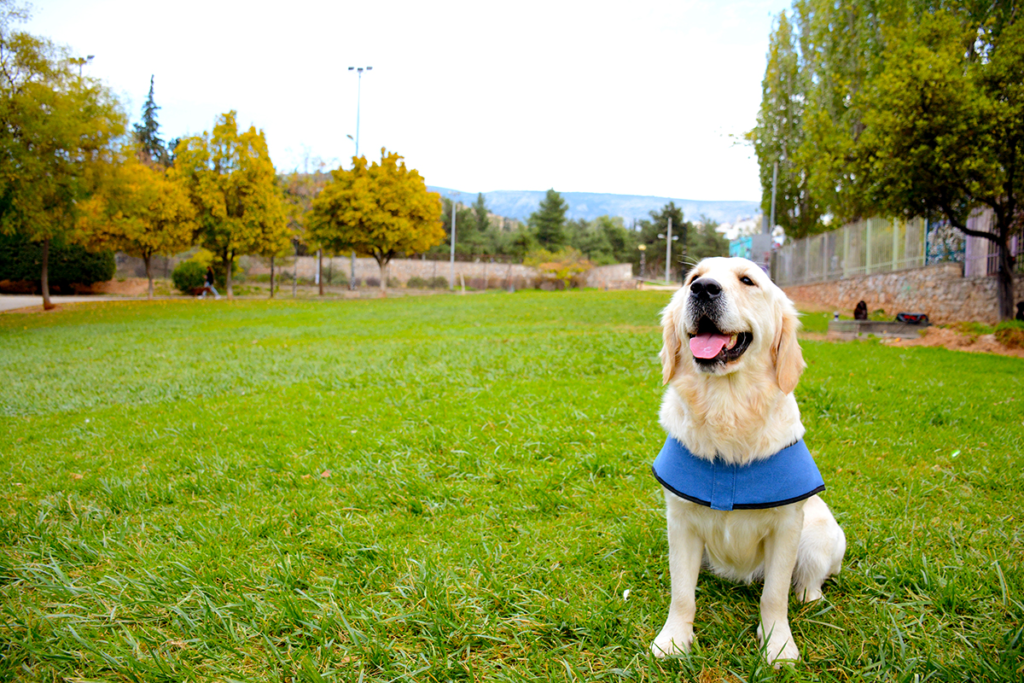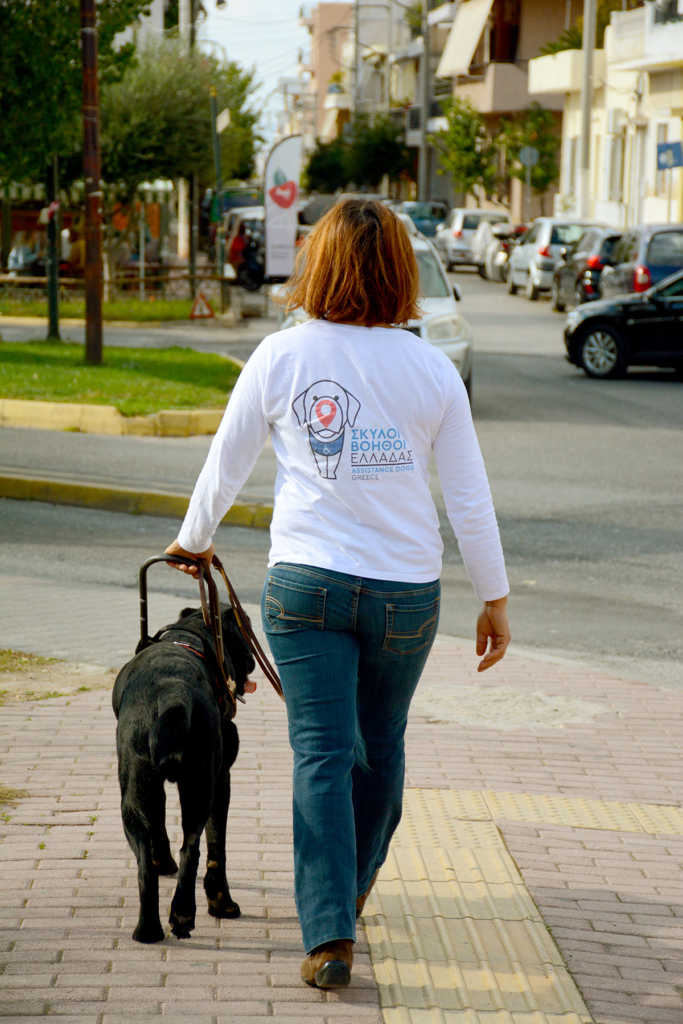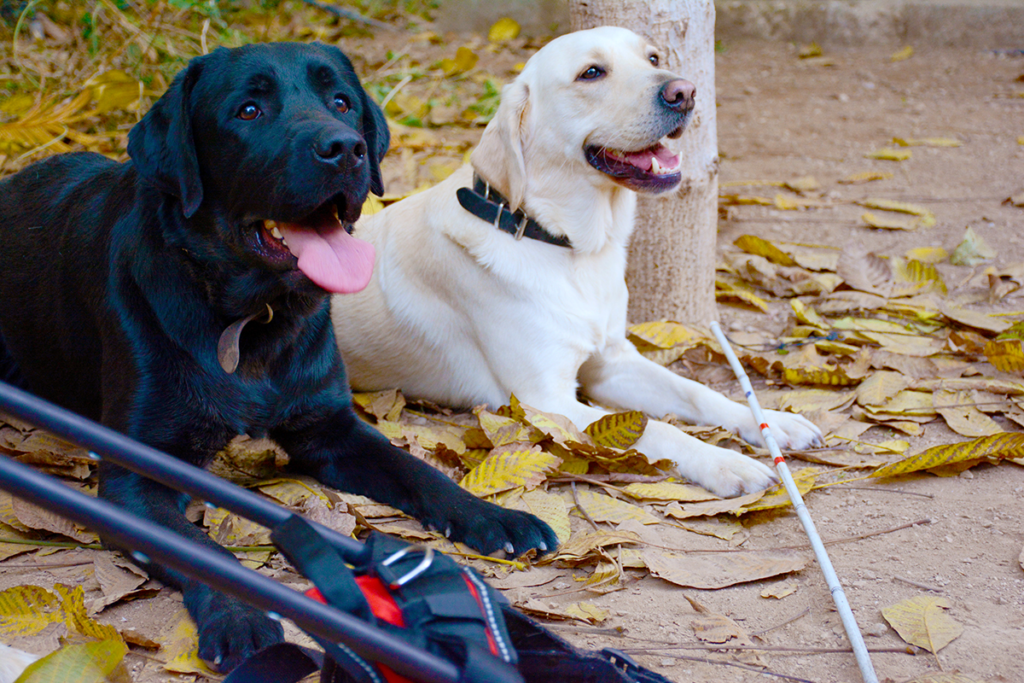
The organization “Assistance Dogs Greece” trains guide dogs for individuals with visual impairments and children with autism, providing them with both practical and emotional support.
In a society where every form of diversity is often met with suspicion, the challenges faced by people with disabilities are numerous. These challenges encompass everyday practical issues, such as navigating the streets, as well as issues related to lack of independence or emotional support – not to mention the issue of stigma, which unfortunately still exists.
“Assistance Dogs Greece,” a non-profit organization founded in August 2021, seeks to facilitate the daily lives of these individuals. The catalyst for its establishment was the significant need identified by the organization’s members for assistance dogs for children with autism, along with the belief that an assistance dog can make a difference.
Guide dogs significantly enhance the safety of individuals facing intellectual disabilities or visual impairments. They assist them practically, increasing their safety on the streets, and also emotionally.
According to Efi Laggaris, the organization’s Marketing and Sponsorship Manager, a dog “teaches the person to take on responsibilities. It also helps with their interaction with other people, aids in their recovery from emotional disarray following a meltdown or emotional outburst, and even contributes to better sleep quality.”
We spoke with her about the purpose, goals, and necessity of such an organization.
What is the purpose and vision of the organization?
“Assistance Dogs Greece” is a non-profit organization that trains dogs for individuals with disabilities and provides them completely free of charge. It relies on donations in order to achieve its goals.
In order to fulfill our vision, we are committed to training assistance dogs according to the highest standards and to educating individuals with disabilities and their caregivers to establish a strong bond with the assistance dog. Additionally, through presentations, we aim to change society’s mindset to include individuals with disabilities as equal and valued members.
Our vision is for every individual with disabilities in our country to be able to live with an assistance dog, providing them and their caregivers with a better quality of life through values such as independence, safety, social respect, emotional support, mental tranquility, and selfless love.
A service dog changes the mindset of society towards individuals with disabilities.
How important is the assistance provided by a service dog in changing societal attitudes towards individuals with disabilities?
We believe that service dogs bring about a significant positive change in the daily lives of people with disabilities. For example, a guide dog for individuals with visual impairments offers safety, autonomy, and confidence when navigating unfamiliar environments. It helps navigate obstacles such as potholes, inaccessible sidewalks, low-hanging branches, etc., enabling the individual to move quickly and safely on the challenging streets of Greece. People with visual impairments now have access to services and experiences that might have been more difficult in the past.
Another crucial aspect where a service dog brings about substantial change is in altering society’s mindset towards individuals with disabilities. In other words, when they are out with their service dog, people look at them with admiration and curiosity, eager to engage in conversations to learn more about the dog and its training.
How do you train a service dog?
Our service dogs are trained to the highest standards set by international organizations, always using positive methods that reward desired behaviors. The training process takes approximately 2 years and begins when the puppy is 10 weeks old.
For a service dog to graduate, they must excel in necessary ability and character tests to ensure the quality of their work.
Do you select dogs from specific breeds?
Currently, we select Labrador Retrievers or Golden Retrievers. This is because these dogs are naturally people-oriented, intelligent, love children, enjoy working, are not aggressive, and their size is suitable both for guide dogs and for anchoring a child with autism, which a smaller dog might not be able to do.
However, in the future, we plan to include other breeds as well, depending on the specific needs of individuals with disabilities.

Once you provide a service dog, are there obligations and responsibilities that the handler must have towards the dog?
The well-being and welfare of the dog are non-negotiable prerequisites for us. Also, handlers must ensure that the dog’s training level is maintained to ensure the safety of everyone involved. For these reasons, our dogs are not given away; they are loaned out under a loan agreement. We remain in contact with the families and handlers for as long as the working years require.
ESPECIALLY IN CASES OF CHILDREN WITH AUTISM, THE CHILD FINDS IN THE SERVICE DOG A UNIQUE FRIEND WHOM THEY CAN TRUST AND COMMUNICATE WITH.
– What are the challenges you face during the training of a service dog?
At the moment, the biggest challenge we face is limited financial resources. As mentioned earlier, the training takes about 2 years, which translates to around €20,000 until a service dog is delivered.
– Do the individuals receiving a service dog also need training?
Always, before we deliver a service dog, we ensure that the right “matching” has been done with the handler, because we want both sides to be happy. Thus, part of the training involves educating the handler or even the family.

What kind of relationship develops between the individual and the service dog?
Every case is different and unique, but what we see in almost all cases is a sense of security, trust, respect, and gratitude towards the dog. It’s a relationship of selfless love and care that comes from both sides.
Especially in cases of children with autism, the child finds in the service dog a unique friend whom they can trust and communicate with. Just like in any person with a dog, the companionship they provide is invaluable.
What happens when the dog can no longer assist the individual due to age or other conditions?
Can the individual manage on their own or do they need a new service dog? Individuals with visual impairments, as mentioned earlier, are independent in their mobility, having been trained with a white cane. So, if their dog for some reason (e.g., due to age) exits the program, they are still able to move independently. However, using a guide dog for mobility offers greater safety and speed.
In the case of service dogs for children with autism, our goal is that over time, the child will be able to continue their life without the dog. However, this depends on many factors, as we are dealing with the autism spectrum, which means there are different needs.

You mentioned that you organize programs in schools. What is the purpose of these activities?
Through games and activities, children understand the various ways in which individuals with visual impairments can move, read, play, cook, etc. Depending on the program, children are divided into small groups, learn about Braille writing, close their eyes and play games using their remaining senses, take short walks with a white cane. They are informed about guide dogs and get to know some of them up close.
At the end, all together, students and volunteers, analyze and evaluate what they experienced, in order to convey the message of diversity and the importance of education and awareness.
What do you plan for the future?
Our goal is to integrate 5 new puppies into our program that will become assistance dogs for children with autism. Additionally, we are planning an Awareness Day where families interested in guide dogs can attend. We would be glad to see you there!”
Source: OW



